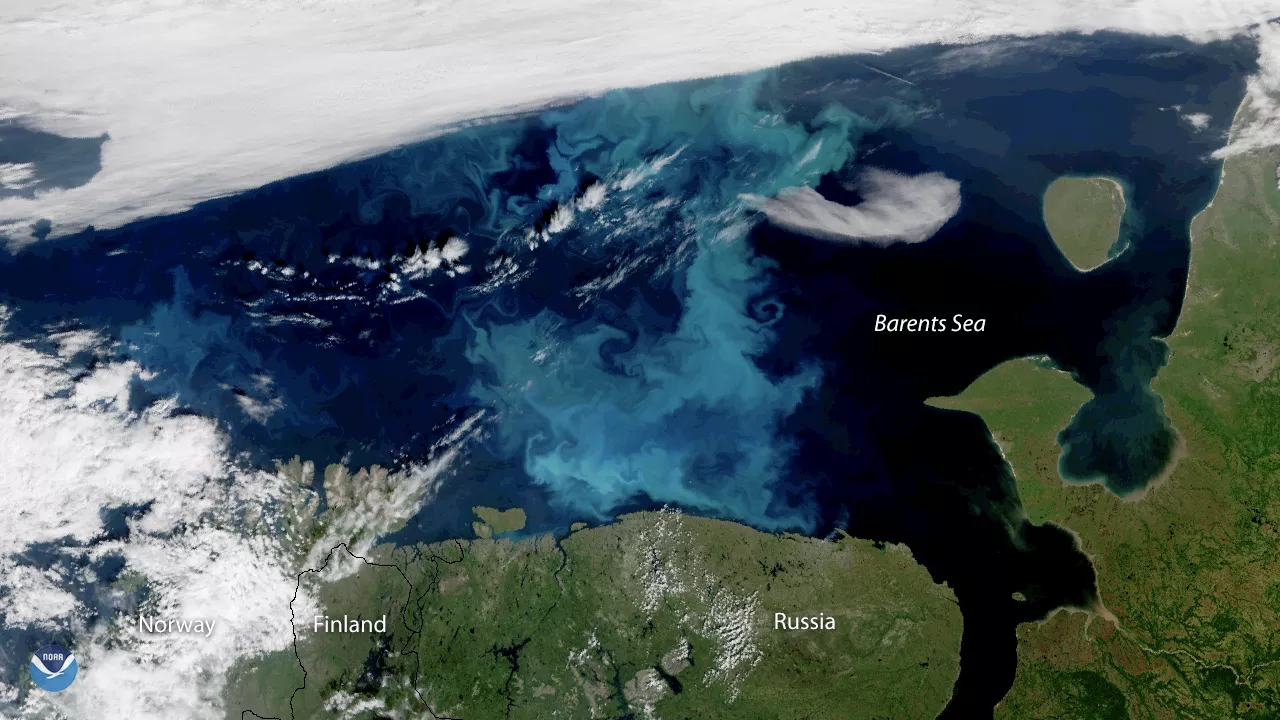
Clear skies over northern Russia and Scandinavia reveal magnificent swirls of blue and turquoise in the Barents Sea. This true-color image, captured by the NOAA-20 satellite on July 30, 2018, shows a large phytoplankton bloom, made up of millions of tiny plant organisms that thrive in the nutrient-rich waters of the Arctic. Phytoplankton blooms are common in the Barents Sea in late July and August, thanks to a combination of 24-hour sunlight, minimal ice cover and relatively warm surface waters.
Unusually strong high pressure over Scandinavia this summer has brought record-breaking heat as far north as the Arctic Circle. While the dry weather pattern has caused historic wildfires in the region, the relative lack of cloud cover has also allowed polar-orbiting satellites to see the region in stunning detail.The radiant shades of teal and turquoisein this image are likely coccolithophores , a type of phytoplankton that can grow up to 50 meters (164 feet) below the water surface. In the Barents Sea, this type of marine algae is most prevalent in August , when the water is warmest and settles into warmer and cooler, fresher and saltier layers.
This enhanced true-color satellite imagery is not a simple photograph of Earth, but rather a composite image. It was created by combining data from the three color channels on the NOAA-20 satellite's VIIRS sensor, sensitive to the red, green and blue (or RGB) wavelengths of light. In addition, data from several other channels are often also included to cancel out or correct atmospheric interference that may blur parts of the image.
